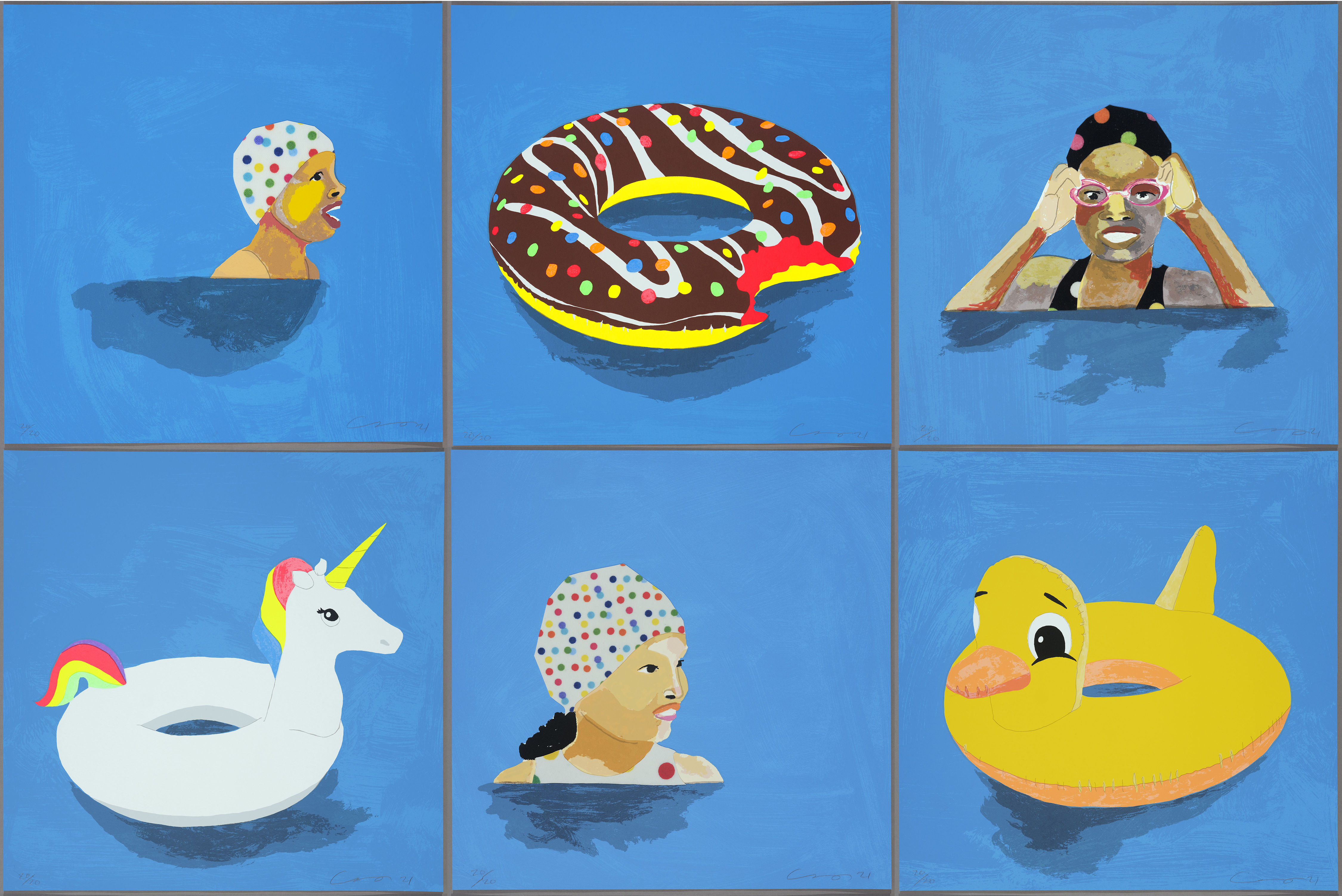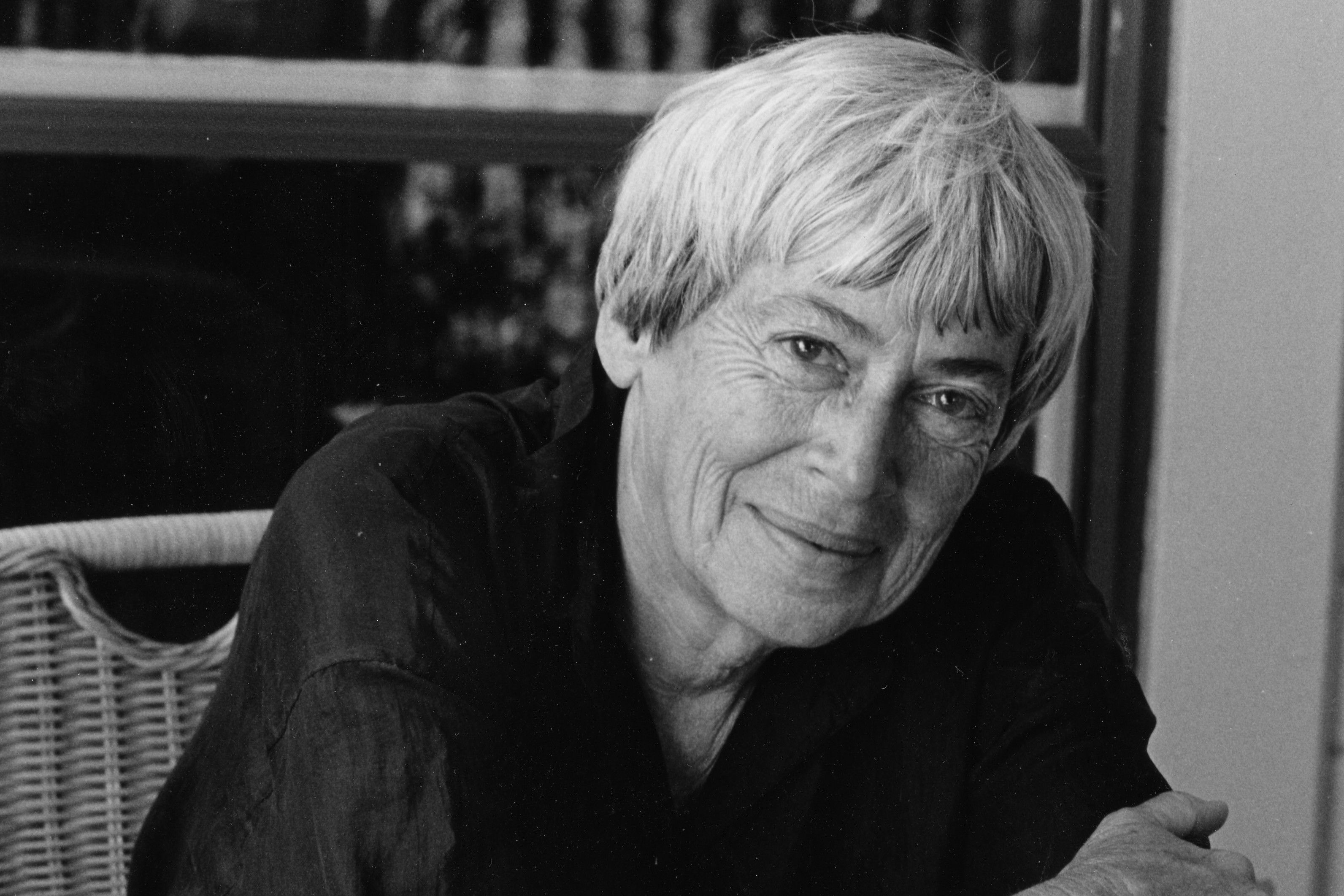The 5 Ursula K. Le Guin Books You Need to Read, According to Her Son

Image: Courtesy Theo Downes Le-Guin
“Her voice is as familiar to me as my own,” says Theo Downes-Le Guin, youngest child of hugely influential Portland author Ursula K. Le Guin. “That voice is inside my head while I’m reading.” Most aren’t so fortunate, even if they feel at home in Le Guin’s Earthsea and Hainish universes. Before her death in 2018, Le Guin was unanimously regarded as the leading light of American science fiction. She expanded the genre’s bounds, conveying insights on gender, sexuality, and race, often informed by cultural anthropology, feminism, Taoism, and psychoanalysis—themes she continued in her numerous essays, poems, and children’s books. While curating an exhibition of his mother’s life and work, A Larger Reality, at Oregon Contemporary (October 31, 2025–February 8, 2026), Theo shared a few favorites.
Catwings
1988–1999

Image: Courtesy Simon and Schuster
A four-book children’s series illustrated by S. D. Schindler. The basic concept is a family of cats who have wings. Why and how is never explained, and it’s not important. Some humans they encounter can understand and accept cats with wings. Others can’t, and they put the cats at risk because they keep othering them. In my experience, every kid can see something about themselves in these books, in the same way that they inevitably project themselves into A Wizard of Earthsea—as they are intended to, as we are intended to.
Steering the Craft
1998 (revised in 2015)

Image: Courtesy Simon and Schuster
I think Ursula felt like, if you want to understand how another writer writes, read their writing, not necessarily what they wrote about their writing. But as she started teaching more, and refined her pedagogical life and skills, that led her to the notion that it might be a good idea to codify some of that. Chapter headings are “The Sound of Your Writing,” “Punctuation and Grammar,” “Sentence Length and Complex Syntax.” There are also examples of texts she admires—Jane Austen, Harriet Beecher Stowe, Mark Twain, Virginia Woolf.
Lavinia
2008

Image: courtesy Simon and Schuster
Her last novel. She said it was the book that best contained and represented everything that was important to her, which is not surprising given where it came in her career, in her life. It’s about a minor character in Virgil’s Aeneid. Lavinia gets such short shrift as a woman—she’s pivotal, but only has a few lines. Ursula gives Virgil a legitimately tough time for how he kind of disappears her. In some ways, the project is about breathing a full character into this woman who was mostly ignored. But Ursula was someone who identified first as a poet and second as a prose writer, and who loved Virgil. So this is a love letter to Virgil as well.
No Time to Spare
2017

Image: Courtesy HarperCollins
A selection of her blog writings. She did 130 posts, starting in 2010, inspired by José Saramago’s blog, which he started when he was 85. People who knew Ursula, or who know her work well, know humor and silliness are big components of her writing. Most people don’t think of her that way, though. So it’s nice to point to places where the humor is right there on the surface. We get occasional complaints that the audiobook was not read by Ursula, which I completely sympathize with…it’s so much her voice. So we are actually working on a podcast version—with a different reader for each post (friends, acquaintances, peers).
So Far So Good
2018

Image: Courtesy Copper Canyon Press
Her most posthumous book, if you will. She sent in the revised manuscript on January 15 and died on January 22. You would think, given the timing and the titles of the poems, that it would be very elegiac, but it’s not especially. It’s the work of an older artist, and there is some sense of transition, but not necessarily of ending. Poetry was how she found her way into writing, and it was how she found her way through the difficulty of no longer having the energy for a novel. The last published piece she wrote was for a poetry collection benefiting an animal rights charity. It’s a short, funny little poem about a cat. So many poems. I’m still finding them.




